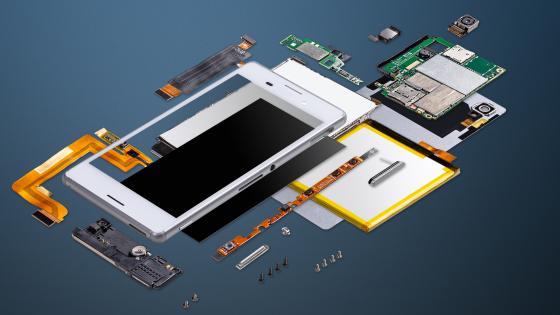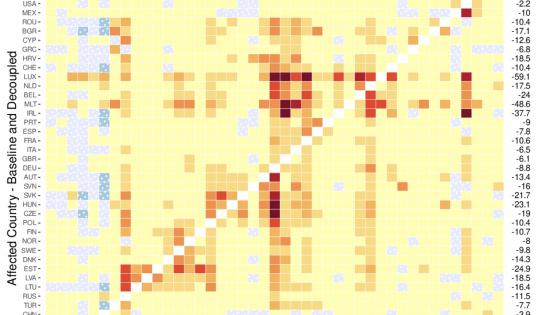Four years after the start of the US–China trade war, it is still unclear if the growing number of restrictions on trade has resulted in a loosening of economic interdependence between the two countries. Bown (2022) notes that the US has drastically reduced imports from China of products such as semiconductors, consumer electronics, and some IT hardware, but its imports of laptops, computer monitors, phones, video game consoles, and toys are higher than ever.
Decoupling efforts do not seem to help reduce overall exposure to shocks (Kukharskyy et al.2021 and Borin et al. 2022), and they are likely to be costly. In the event that the world ends up divided into economic blocs, it is estimated that the welfare costs will be between 5% and 12% (e.g. Cerdeiro et al. 2021, Goes and Bekkers 2022).
These estimates are highly uncertain, however. On the one hand, the employed trade models overestimate the costs of decoupling because they assume that global firms will have many substitutes to choose from (for example, when they are cut off from key suppliers) and hence that full decoupling is possible. On the other hand, these same studies also underestimate the potential costs of decoupling because they do not factor in the risk that decoupling may impede the basic functioning of critical industries.
In a new study (Thun et al. 2022), we argue that an emergent form of industrial organisation, which we refer to as the ‘massive modular ecosystem’ (MME), greatly complicates the prospects of decoupling. An MME is an ‘ecosystem of ecosystems’ in which standard interfaces allow linkages both within and between industries, allowing for rapid increases in scale and complexity. MMEs are particularly prevalent in ICT and in all industries in which software is a critical input in production.
We use the case of the smartphone industry – including the design and assembly of phones, key components, operating system software and compatible apps, and mobile telecom standard setting – to illustrate how and why digital technologies have transformed the organisation and geography of high-tech industries. The study is based on evidence from pooled longitudinal data from multiple sources: component lists for 456 mobile phone handsets introduced between 2008 and 2019; data on 15,544 mobile phone handset components and performance specifications from 2009-2020; data on nearly 10 million company contributions to various releases of Google’s Android operating system from 2008-2020; and data on about 16,000 company contributions to each generation of mobile telecom standards from 2001-2019.
The smartphone sector has long served as the poster child for global value chains (GVCs) (Escaith 2021) – it is both ‘made in the world’
and serves as the critical digital platform for access to consumers, and downstream goods and services industries.
The evolution of this industrial ecosystem over the course of two decades captures how and why the organisation of high-tech industries have developed into massively modular ecosystems, leading to unprecedented gains in productivity, quality, and innovation, but also to extreme degrees of geographic vertical specialisation and interdependence that have triggered many of the great trade policy tensions of the early 2020s.
The smartphone industrial ecosystem shows that MMEs are different from traditional industries in the following ways.
The digital revolution has changed the industrial organisation of smartphones and other ICT products
How is it possible to spread innovation, production, and standards-setting for one of the world’s most complex products over many companies and countries? The answer we offer is modularity, where common industry standards allow devices and software to be integrated using known protocols while, at the same time, allowing specialised firms to continually push innovation in each module to the bleeding edge. Modularity has long been presented as a key feature of GVCs in technologically-intensive industries (Gereffi et al. 2005). However, our research reveals something larger: a set of modular ecosystems interlinked across a vast landscape of actors and locations in the smartphone industry, as well as to other parts of the broader ICT sector, since many component technologies, protocols, and standards are shared. In our paper, we refer to this ecosystem of ecosystems as massively modular.
Unlike traditional GVCs, where ‘lead firms’ set the agenda, MMEs are essentially leaderless.
Albeit simplified, Figure 1 visually hints at the complexity and multiplicity of linkages in the smartphone MME.
This industry organisation represents a clear departure from industries such as the automotive industry in which relational linkages and proprietary standards have long prevailed. In autos, a tight oligopoly of automotive ‘lead’ firms has traditionally held huge purchasing power and kept suppliers captive, resulting in high transaction costs and low competition as well as low economies of scale and scope (Sturgeon et al. 2008). That said, even in autos, there is now an evolution towards more modular and decentralised forms of industrial organisation as a result of technical innovations, including electrification, digitalisation, and the consolidation of a car’s electronic functions (Sturgeon 2022).
Figure 1 Example of a massively modular ecosystem in the smartphone industry
Source: Thun et al. (2022).
How does an MME differ from a traditional GVC?
The case study of the mobile phone handset industry reveals three novel and apparently contradictory features associated with MMEs that are not captured by traditional industrial organisations and trade models.
First, they allow for extremely complex products to be produced on a large scale, unlike more traditional industries where the most complex products are produced in low volumes and are highly customised. Smartphones are almost unfathomably complex, constantly gaining performance and functional capabilities (Figure 2). At the same time, they are produced in extremely high volumes.
Figure 2 Mobile handset performance and functional improvements, 2009-2020
Source: Thun et al. (2022).
A second novel feature of MMEs is that they simultaneously feature high degrees of market concentration and high degrees of fragmentation. Markets are highly concentrated at the level of complex sub-systems and individual components, with very few firms – sometimes just one firm – serving the entire global demand. However, interdependence means that the industry as a whole is very fragmented. Vertical specialisation has enabled modularity: within a sub-system, firms must be highly specialised and knowledgeable about their own domain (and often make huge investments), and they must be fully aware of the standard interface that connects them to the system as a whole, but they can be less knowledgeable of the inner workings of other modules.
Both market concentration and fragmentation have increased over time in the smartphone industrial ecosystem and adjacent ICT industries. The number of suppliers involved in producing an average smartphone increased on par with the number of components (Figure 3), but the number of suppliers of each individual component – and even of a broad set of subcomponents such as memory, CPU, displays, and network connectivity – decreased to the point that by 2018 each segment had a greater degree of concentration than what the US Department of Justice Horizontal Mergers Guidelines considers a “highly concentrated market” (Figure 4).
Figure 3 Number of components and suppliers per device across device ranges
Source: Thun et al. (2022).
Figure 4 Increase in market concentration at the sub-system level
Source: Thun et al. (2022).
A third feature, related to the second, is that the industry’s footprint is simultaneously clustered and dispersed across the globe. Suppliers specialised in given functions and niches are concentrated in specific locations, often in specific industry clusters, but because MMEs integrate work carried out in many highly specialised clusters, and these are not very footloose, the system as a whole is geographically dispersed. Geographic clustering and dispersal have also increased over time (Figure 5).
Figure 5 Mobile phone component cost share by sub-system and country, 2010 versus 2019
Source: Thun et al. (2022).
The MME policy dilemma: Decoupling is very attractive, but harder to achieve than many think
Vertical geographic specialisation in MMEs, which occurs when firms in different countries specialise only in particular stages of a good, has created enormous benefits in terms of productivity, efficiency, innovation, and cost reductions. But these same circumstances have created extreme levels of interdependence, which, during periods of supply chain disruptions and geopolitical tension, are perceived by policymakers and companies alike as vulnerabilities.
As a result, each of the three features illustrated above (technological, industrial organisation, and geographical) simultaneously generates pressures for decoupling and for geopolitical accommodation and cooperation, a dilemma that is currently confounding policymakers the world over.
Figure 6 The decoupling-accommodation policy dilemma
Source: Thun et al. (2022).
In conclusion, decoupling might not only have high welfare costs, as Kukharskyy et al. (2021) have shown, but it might even hamper the functioning of critical industries, since systems cannot function without critical components. The capability and capital requirements in ICT products and services such as smartphones have become so high that no one country is able to build entire systems on its own. As a result, substituting technology-intensive sub-systems and components, or the technology clusters where they arise, is very likely to be impossible due to the extraordinary requirements in terms of capital, capabilities, and talent. The impulse to ‘decouple’ that dominates the current policymaking scene will, sooner or later, have to come to terms with the reality of these industries, and a search for a new system of global governance will – hopefully – begin in earnest.
References
Baldwin, C Y and K B Clark (2000), Design rules: The power of modularity, MIT Press
Baldwin, C Y (2020), “Ecosystems and Complementarity”, Harvard Business School Working Paper.
Baldwin, R (2019), The Globotics Upheaval: Globalization, Robotics, and the Future of Work (1st edition), Oxford University Press.
Baldwin, R (2022), “The peak globalisation myth: Part 4 – Services trade did not peak”, VoxEU.org, 3 September.
Bown, C (2022), “Four years into the trade war, are the US and China decoupling?”, PIIE, 20 October.
Cerdeiro D, R Mano, J Eugster, D Muir, and S Peiris (2021), “Sizing Up the Effect of Technological Decoupling” IMF Staff Paper 2021/069.
Cusumano, M A, A Gawer and D B Yoffie (2019), The Business of Platforms: Strategy in the Age of Digital Competition, Innovation, and Power, HarperBusiness.
Escaith, H (2021), “Made in the World: Business Models, Servicification and Digital Intermediation Platforms”, IDB/INTAL workshop on electronic commerce for Mercosur countries, 6-10 December.
Furr, N F, A V Shipilov and N Siggelkow (2022), “What is digital transformation? Core tensions facing established companies on the global stage.” Global Strategy Journal 1-24.
Gawer, A and M A Cusumano (2014), “Industry platforms and ecosystem innovation”, Journal of Product Innovation Management 31(3): 417-433.
Gawer, A and M A Cusumano (2008), “How Companies Become Platform Leaders”, MIT Sloan Management Review 49(2): 28-35.
Gereffi, G, J Humphrey, T Sturgeon (2005), “The governance of global value chains”, Review of International Political Economy 12(1): 78-104
Góes, C and E Bekkers (2022) “The Impact of Geopolitical Conflicts on Trade, Growth, and Innovation”, WTO Staff Working Paper ERSD-2022-09.
Henkel J, C Y Baldwin, and W Shih (2012) “IP Modularity: Profiting from Innovation by Aligning Product Architecture with Intellectual Property”, Harvard Business School Finance Working Paper No. 13-012.
Jacobides, M G, T Knudsen and M Augier (2006), “Benefiting from innovation: Value creation, value appropriation and the role of industry architectures”, Research Policy 35: 1200-1221.
Kenny, M and J Zysman (2016), “Rise of the platfform economy”, Issues in Science and Technology in Society 32(3): 61-69.
Kretschmer, T, A Leiponen, M Schilling and G Vasudeva (2020), “Platform ecosystems as meta-organisations: Implications for platform strategies”, Strategic Management Journal 43(3): 405-424.
Kukharskyy, B, G Felbermayr, O Krebs and P Eppinger (2021), “Decoupling from global value chains” VoxEU.org, 7 July.
Lund S and J Bughin (2019), “Next generation technologies and the future of trade”, VoxEU.org, 10 April.
Murmann, J P and K Frenken (2006), “Toward a systematic framework for research on dominant designs, technological innovations, and industrial change”, Research Policy 35: 925–952.
Nayyar, G, M Hallward-Driemeier and E Davies (2021), At Your Service? The Promise of Services-Led Development, World Bank.
Sturgeon, T, J V Biesebroeck, G Gereffi (2008), “Value chains, networks and clusters: reframing the global automotive industry”, Journal of Economic Geography 8(3): 297–321.
Sturgeon, T (2022), The Reconfiguration of Automotive Global Value Chains: Implications for Latin America, Inter-American Development Bank.
Teece, D J (2018), “Profiting from innovation in the digital economy: Enabling technologies, standards, and licensing models in the wireless world”, Research Policy 47(18): 1367-1387.
Thun, E, D Taglioni, T Sturgeon, and M P Dallas (2022), “Massive Modularity: Understanding Industry Organization in the Digital Age”, World Bank Policy Research Working Paper No.10164.
United Nations ITU (2022), Measuring Digital Development: Facts and Figures 2022.
Van Alstyne, M W, G G Parker and S P Choudary(2016), “Pipelines, Platforms, and the New Rules of Strategy”, Havard Business Review 4: 54-62.
World Bank (2019), Trading for Development in the Age of Global Value Chains, World Development Report.













